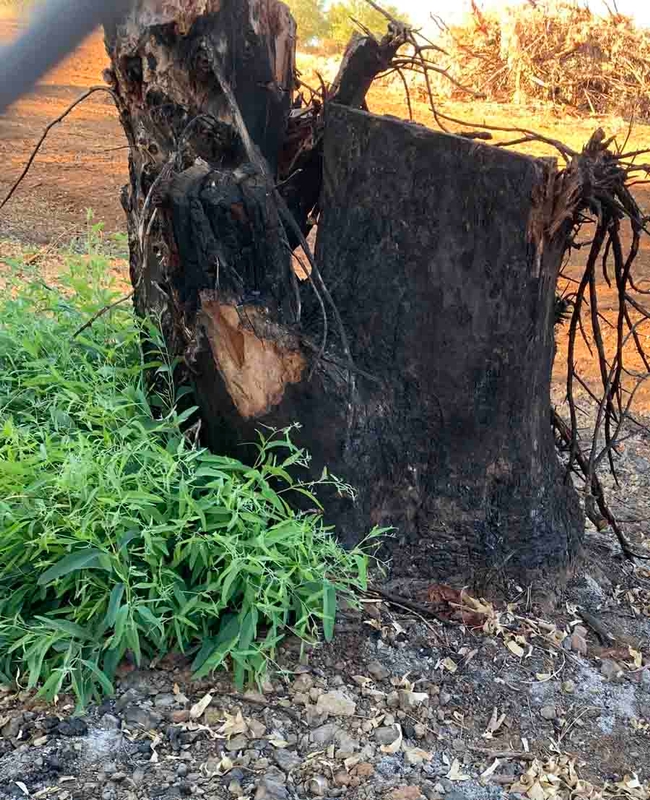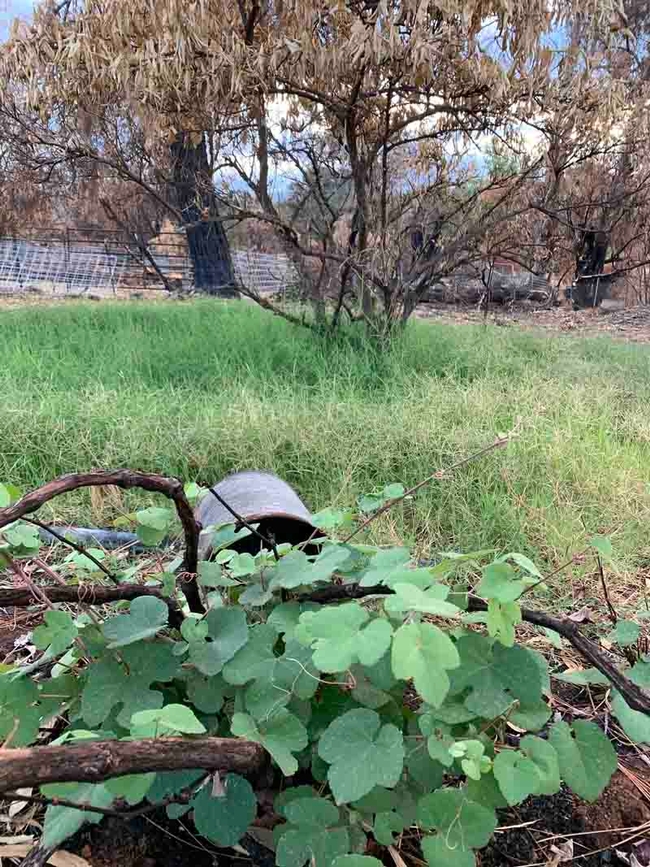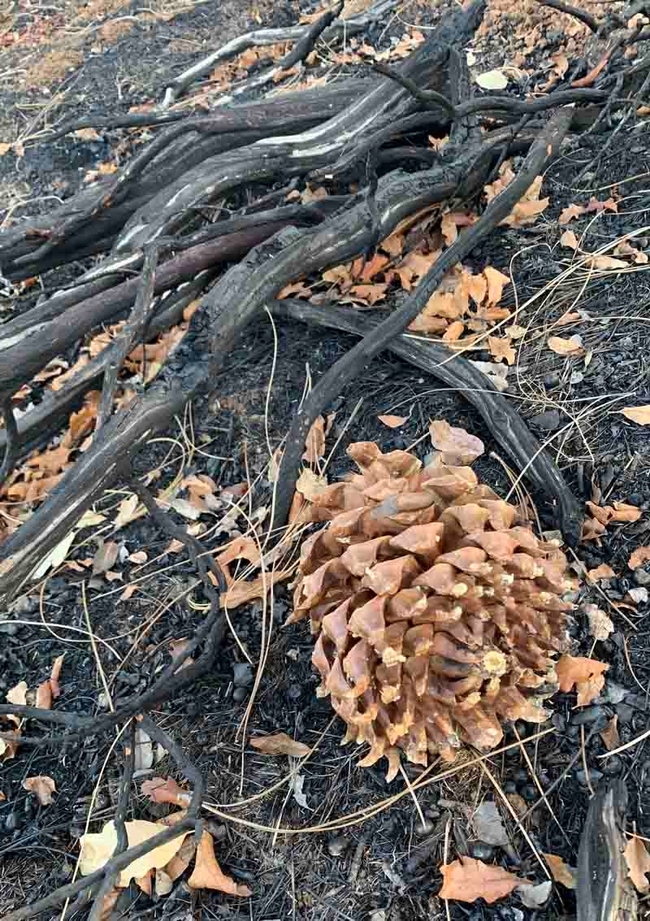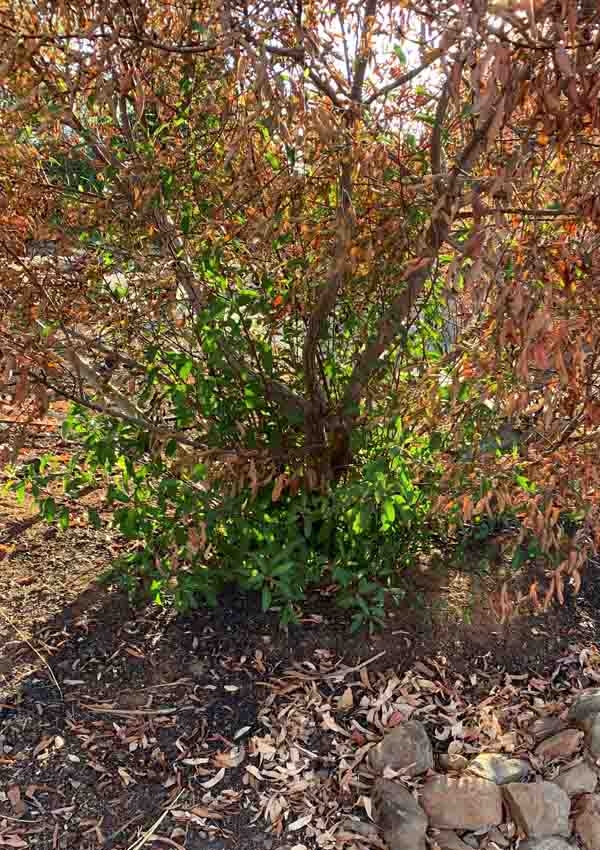“The fundamental chemistry of combustion lies at the core of the living world. When it happens within a cell it's called respiration. When it happens outside organisms, it's called fire.” (Stephen Pyne, NOVA)

In one example of resistance, ponderosa pines shed their lower branches as they mature. This strategy prevents lower branches from becoming ladder fuel, thereby protecting the branches and needles higher up on the trees. Most mature trees have fire-resistant bark from two to four inches thick which insulates the inner tissues from heat (similar to the way Nomex or Kevlar suits protect firefighters). It might seem counterintuitive, but South African aloes and Australian grass trees retain dense dead leaves around their stems; the dead matter acts as insulation against the heat.

In recruitment strategies, seed dispersal is triggered by fire instead of by natural maturation. This process is known as serotiny. An example of serotiny is the Jack pine: In the heat of a fire, immature pine cones open and release small, brown, hard-shelled seeds. You can observe this phenomenon by tossing a young pine cone into a campfire and watching as it opens and releases its seeds. Conifer survival is enhanced with a higher germination rate than other plants due to thermal scarification (the breaking or softening of the seed shell, which facilitates germination).

Many other plants that have evolved in fire-prone landscapes actually need fire in order to propagate. Heath can wait up to two years after a fire to germinate. The germination of yellow rock rose is triggered by smoke. In experiments the germination rate of sugar bush increased from one in ten seeds to nine in ten after being submerged in boiling water while kept dry in waterproof bags. Lodgepole pine depends on fire to melt the resin that surrounds its seeds so they can be released. The acacia tree “recruits” ants to carry its resinous seeds underground where they can then germinate after a fire.
Another form of recruitment is pyrogenic flowering, found in plants that have adapted to periodic fires by increasing their rate of flowering after a fire event. In this situation, fire actually facilitates and accelerates flowering and seed development. Plants and new sprouts get an extra benefit because fire creates an environment that has increased light due to decreased tree canopy; soil amendments and nutrients from ash; and greater opportunity for birds, bees, and winds to carry seeds to bare earth. Fireweed and the grass tree have particularly impressive floral displays after a fire.
In our area, and in chapparal and forest ecosystems in general, landscapes have received periodic fire for thousands of years, and the plants that thrive here have evolved to withstand or even rely on it. But fire is disastrous if your home is located in the path of one, as many of us have experienced. Regular prescribed or controlled burning at the proper time of year can control the size and intensity of future unplanned fires as well as result in greater germination rates.

In many ways, plants have developed strategies to live with and even win over fires! Overcoming the disadvantage of not being able to run away, plants have evolved ways to use fire to survive, multiply, and thrive. Hopefully humans will do so as well.
For more information on this topic, see the following references, used in writing this article:
NOVA Online | Fire Wars | How Plants Use Fire | PBS
Andrew C. Scott, et al, Fire on Earth: An Introduction (2014).
Improving California's Forest Health | Our Strategies | CAL FIRE
UC Master Gardeners of Butte County are part of the University of California Cooperative Extension (UCCE) system. To learn more about us and our upcoming events, and for help with gardening in our area visit our website. If you have a gardening question or problem, email the Hotline at mgbutte@ucanr.edu or leave a phone message on our Hotline at 530-552-5812. To speak to a Master Gardener about a gardening issue, or to drop by the MG office during Hotline hours, see the most current information on our Ask Us section of our website.